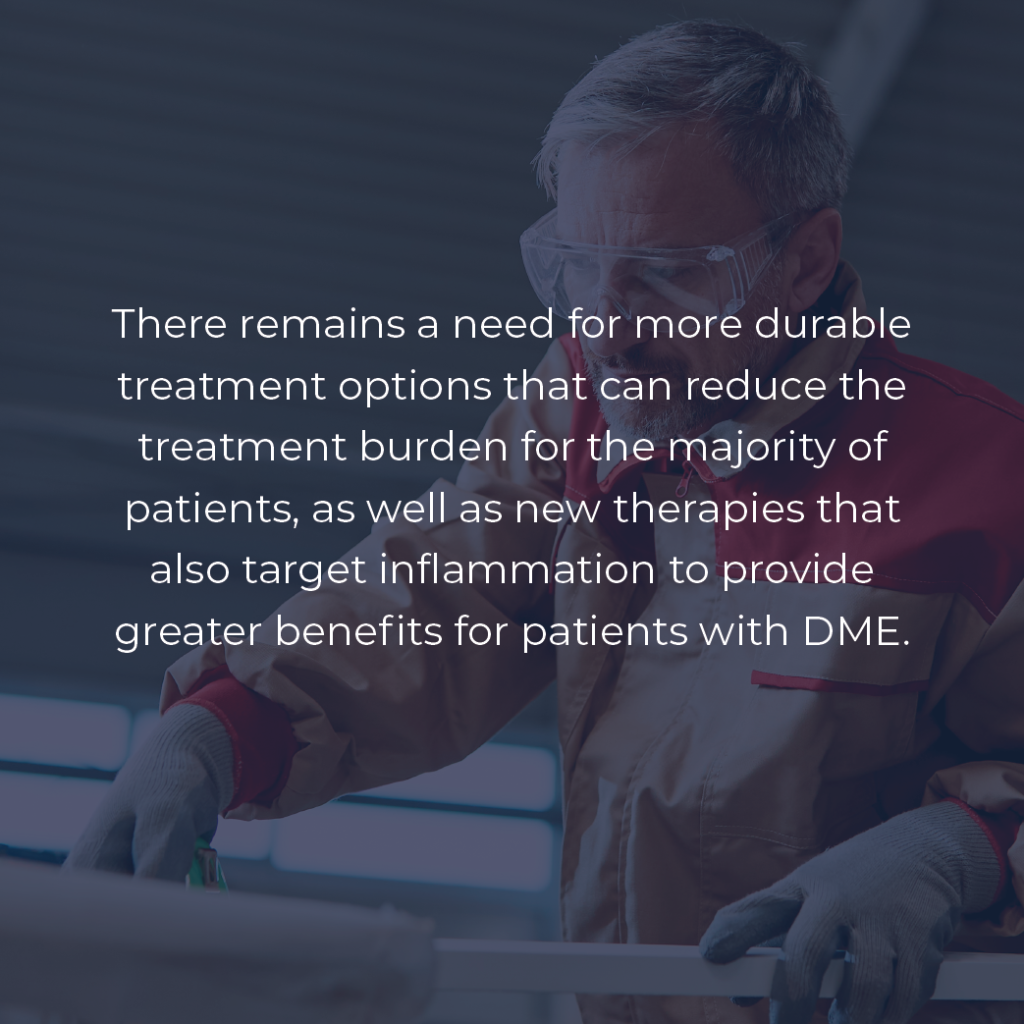WHAT IS DIABETIC MACULAR EDEMA (DME)?
Diabetic macular edema (DME) is a serious eye condition that affects people with diabetes. DME is a leading cause of vision loss among working-age adults.
High blood sugar levels due to diabetes damage blood vessels in the retina, the light-sensitive tissue in the back of the eye that helps process visual information, causing them to leak fluid and blood into the retina. Sometimes the eye may form new, abnormal blood vessels in the retina to improve blood circulation in the retina. These blood vessels can easily rupture and bleed. Collectively, this is known as diabetic retinopathy.
When the leaked blood and fluid accumulate in the macula, the region within the retina responsible for clear central vision, it causes it to swell (edema). This is called diabetic macular edema or DME. DME can occur at any stage of diabetic retinopathy and is a serious condition that can lead to vision loss and even blindness if not treated.
Elevated levels of VEGF, a protein made by cells that stimulates the production of new blood vessels, play a role in the development and progression of diabetic retinopathy to DME.
In addition to VEGF, there is also a high level of inflammation in eyes with DME. A protein called interleukin-6 (IL-6) plays a crucial role in driving the inflammation as elevated levels of IL-6 are observed in the eye of DME patients and IL-6 levels also correlate with how well a patient responds to treatment.
CURRENT TREATMENT AND LIMITATIONS
DME is often treated with frequent and burdensome injections in the eye (intravitreal injections) that block VEGF, often every 4 to 12 weeks for most patients. Many patients are not able to adhere to this frequent treatment schedule, putting them at risk of permanent vision loss. Furthermore, a substantial proportion of patients (30-66%) do not respond well to treatments that block VEGF alone.


HOW KODIAK CAN HELP
Kodiak’s Antibody Biopolymer Conjugate (ABC®) medicines are designed to address these important challenges.
KSI-501, Kodiak’s second investigational medicine, is a first-in-class bispecific ABC designed to address both vascular permeability and inflammation for high-prevalence retinal vascular diseases. Learn more.
REFERENCES
- Brown et al. Evaluation of Intravitreal Aflibercept for the Treatment of Severe Nonproliferative Diabetic Retinopathy. JAMA Ophthalmol. 2021; 139(9):946-955. doi: 10.1001/jamaophthalmol.2021.2809
- Bressler et al. Persistent Macular Thickening Following Intravitreous Aflibercept, Bevacizumab, or Ranibizumab for Central-Involved Diabetic Macular Edema With Vision Impairment. JAMA Ophthalmol. 2018; 136(3): 257-269. doi:10.1001/jamaophthalmol.2017.6565














